
Everyone who has ever been to both continents will know that American architecture is very different from the buildings you see in Europe. Over centuries of history, American architecture steered away from European norms of city-building and developed its own distinct identity. But it wasn’t always this way.
At the tail-end of the 19th century and the beginning of the 20th century, American architects were still experimenting with traditional European styles, often modernizing or combining several of them in one structure.
And when powerful and generous patrons like the Vanderbilts and Rockefellers came along, the country’s landscape exploded with some of the most extravagant buildings ever built. In this way, the Gilded Age launched an American Architectural Renaissance, and testaments of it are scattered across the map of the United States to this day.
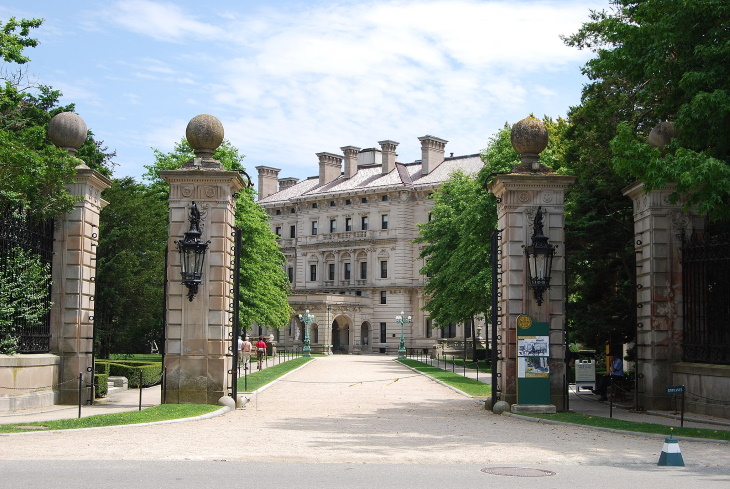
It’s an umbrella term for all American structures inspired by European architecture and completed during the Gilded Age in US history. This was a period that lasted from the late 1800s to the 1920s. During this time, post-Civil War America became a country of businessmen that made huge fortunes.
These suddenly rich families, called the nouveau riche, were not immediately accepted by the long-established millionaire class. So they developed an expensive habit of flaunting their wealth through a fondness for expensive European art, clothing, and most of all through building opulent estates that resembled the homes of European aristocracy.
The term Gilded Age itself is Mark Twain’s stab in their direction, as "to gild" means to sparingly cover something in gold to make it appear more expensive than it is; it can also mean to overdo something. Like much of Twain's writing, the term was so poignant that it stuck, and we still use it today.
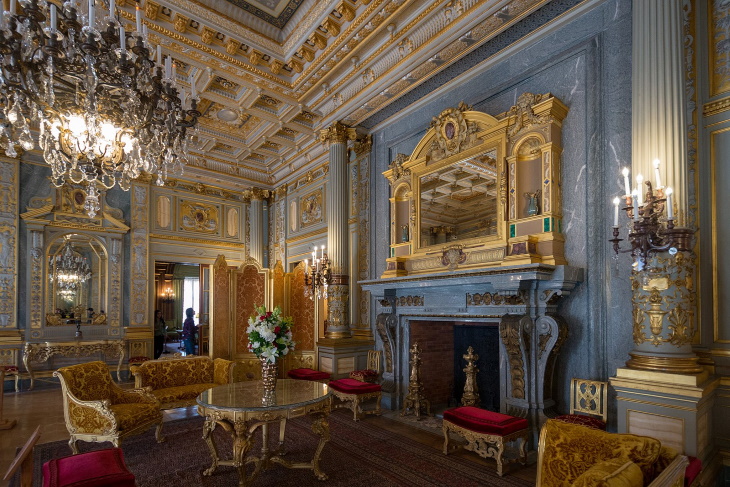
And while it may be true that some Gilded Age buildings can appear flamboyant or gaudy, at times, there are also plenty of examples where the deep pockets of the nouveau riche have given architects artistic freedom and resulted in truly beautiful structures.
The fascinating characteristic of Gilded Age architecture is that there is no single style corresponding to this period in US history. By definition, Gilded Age architecture is more diverse, eclectic, and interesting than any other previous building style. Like the masters of the European Renaissance, the architects of the Gilded Age found their own interpretation of classical European architecture.
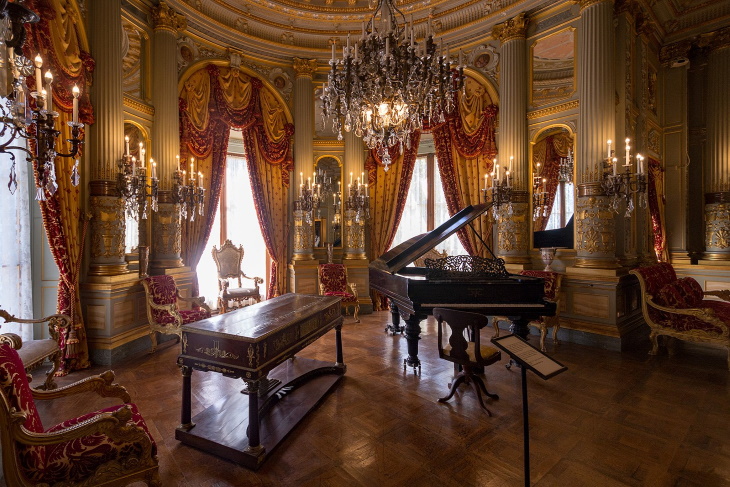
As we go through each building, you will notice us listing several styles - from Victorian Gothic Revival to Beaux-Arts to French Renaissance. What all of these markers do is reference a certain type of European architecture. To gain a more in-depth understanding of each of these styles, refer to our guide A Timeline of Architectural Styles Throughout History.

The brick building was designed by Rotch & Tilden between 1891 and 1893. It has 28 rooms, including 13 bathrooms, a library, a dining room, a bowling alley, a billiard room, and a long wooden veranda. The interior of the building features 17 fireplaces, a three-story great hall, and a staircase with wooden detailing.
Like many Gilded Age estates, Ventfort Hall Mansion narrowly escaped demolition at the end of the 20th century. Fortunately, the building was saved and transformed into a museum. Renovations of the Gilded Age Museum continue to this day, and the first floor of the building is open to visitors.
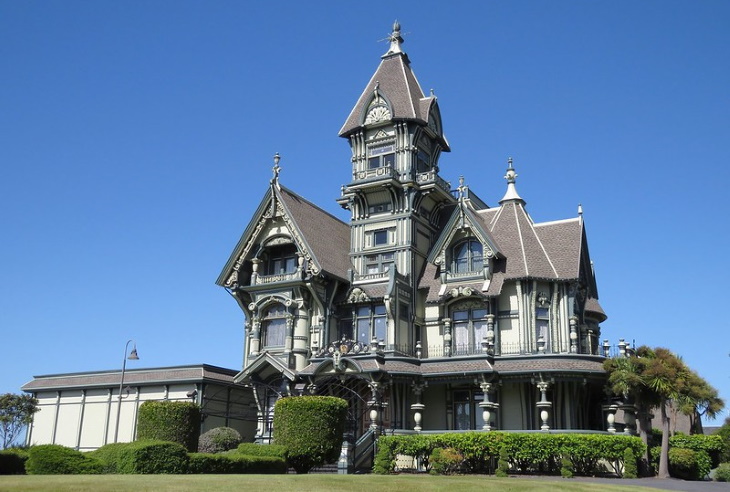
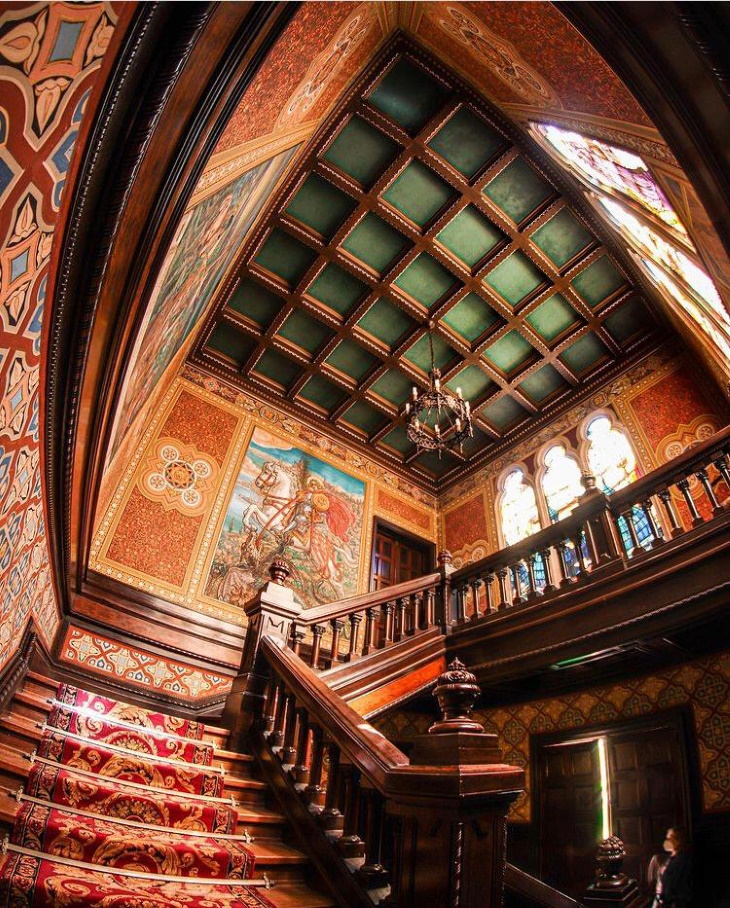
The mansion was commissioned by William Carson, one of the first big lumber barons in California. The structure is made of materials taken from different corners of the planet: redwood from California, white mahogany from Central America, and onyx from Mexico, East India, and the Philippines. With its towers, turrets, layered gables, and columned porches, the building epitomizes Victorian architecture.
In 1950, the Carson family estate closed the deal to sell the mansion to the Ingomar Club as a private clubhouse. Since then, the mansion and the adjacent gardens have been closed to the public.
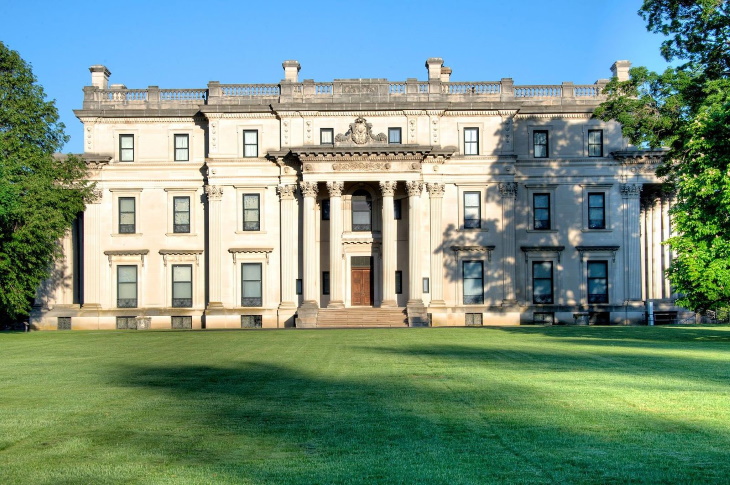
The Gilded Age cannot be discussed without mentioning the Vanderbilt family. The founder of the family, Cornelius Vanderbilt, was a pioneer of the railway industry.
Striving to exceed their reputation as nouveau riche and fit into the ranks of the rich and powerful, this family of millionaires built luxurious homes and threw lavish parties. At the peak of their wealth, they owned over ten mansions on Fifth Avenue in New York City and several luxurious summer homes in places like Newport and Asheville.

Even though the facade of the Vanderbilt Mansion in Hyde Park, New York, may seem unpretentious compared to some of the estates owned by the Vanderbilts, the interior design of the home is as luxurious as it gets. The walls and ceilings are adorned with rare wood paneling, the floors are covered in imported marble, and the interior is draped in velvet, French tapestries, European art, and countless other treasures.
The building itself belongs to Beaux-Arts architecture, and it was built in 1896-1899 by one of the most celebrated architectural firms of the time - McKim, Mead & White. Today, the building serves as a museum under the US National Park Service.

The Westbury House is contained within the Old Westbury Gardens, a museum that was once the estate of the wealthy Phipps family. The building is situated on 200 acres of land and surrounded by a picturesque garden with several lakes, ponds, flowerbeds, and woodland.
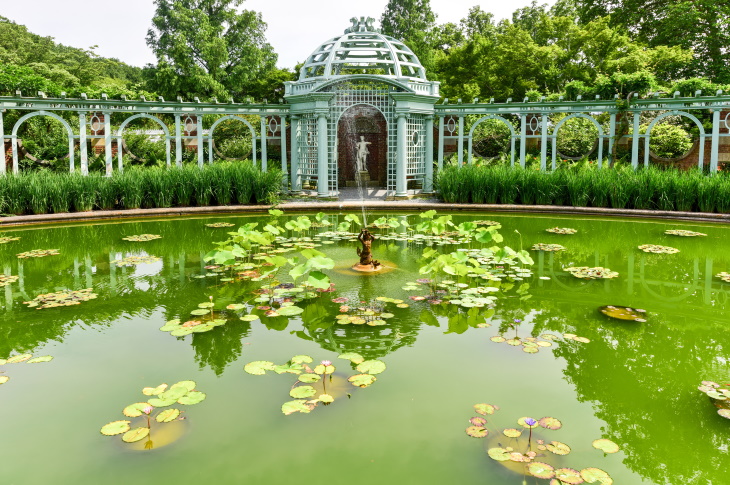
Originally, the house was built for John S. Phipps and his British wife Margarita. The English designer George A. Crawley was tasked with designing the estate in a Charles II style in 1906. The home was also furnished with imported antiques and art.
The centerpiece of Old Westbury is the garden. Interestingly, the garden you see today wasn’t originally part of the estate. After Margarita’s death in 1959, her daughter Peggie opened a public garden in her memory. Both the gardens and the building are in excellent condition, and they are open to the public.
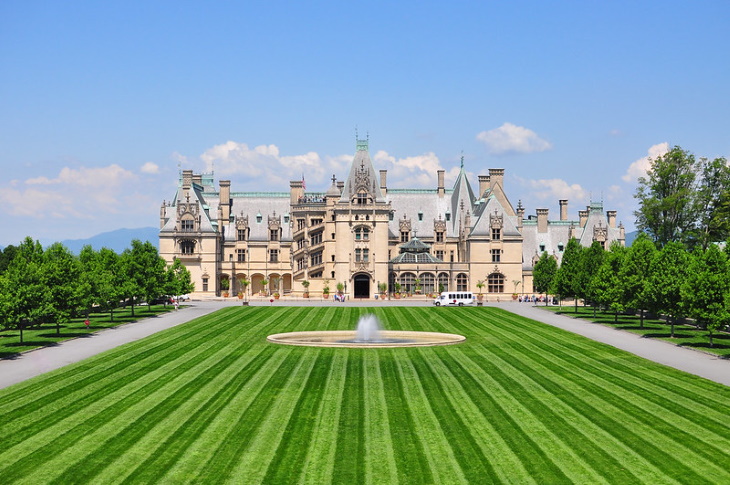
Lay your eyes on the largest home in the United States - the magnificent Biltmore Estate. Constructed for the Vanderbilts in Asheville, North Carolina, the estate is the culmination of the family’s exuberant wealth. It’s also one of the few Gilded Age properties still owned by George Vanderbilt's descendants today, though parts of it are open to the public as a museum.
The 250-room mansion was designed by architect Richard Morris Hunt after a French Renaissance chateau, and the landscaping was done by Frederick Law Olmsted, the father of American landscape architecture. Construction began in 1889 and lasted until 1895. The structure includes a whopping 35 bedrooms, 43 bathrooms, and 65 fireplaces. In fact, the mansion turned out so large that its upkeep is rumored to have depleted much of the family’s funds.
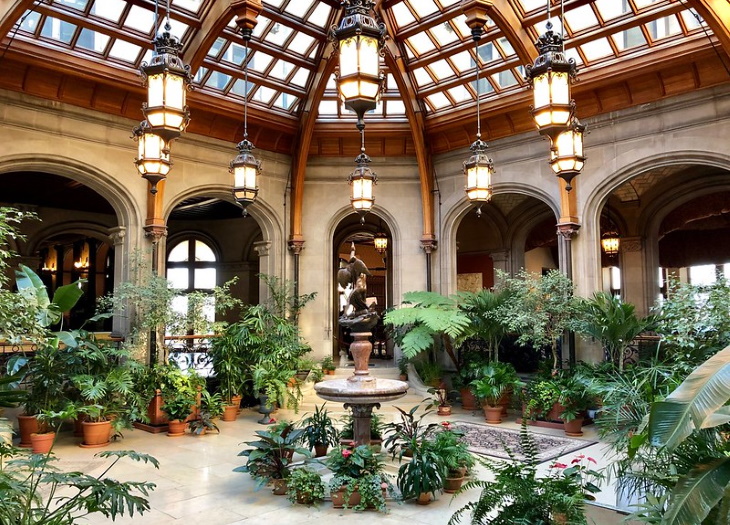

The Breakers is by no means the most lavish or grand structure of the Gilded Age, but it’s highly prized for its architectural excellence. The mansion was designed in the Beaux-Arts style by the same architect as Biltmore - Richard Morris Hunt. The project was Hunt’s final work, which definitely adds to its cultural and artistic value.
The building was commissioned by Cornelius Vanderbilt II and built between 1893 and 1895 as a summer residence. It’s located in Newport, Rhode Island, and it’s the most luxurious residential structure in the entire state. The 70-room estate has five floors.
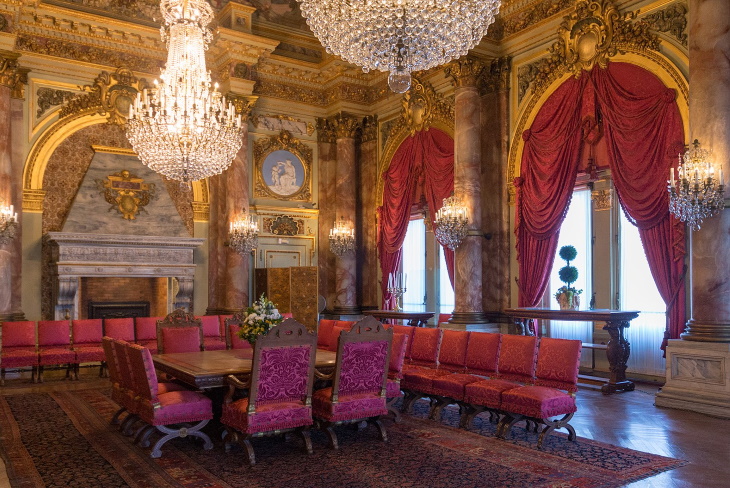
The interior design of the mansion was completed by Jules Allard and Sons and Ogden Codman Jr. For the interior, the designers used marble imported from Italy and Africa, exotic wood, and mosaics and art from France and all over the world.
Today, the Breakers is visited by 450,000 tourists every year, making it the most-visited attraction in Rhode Island.
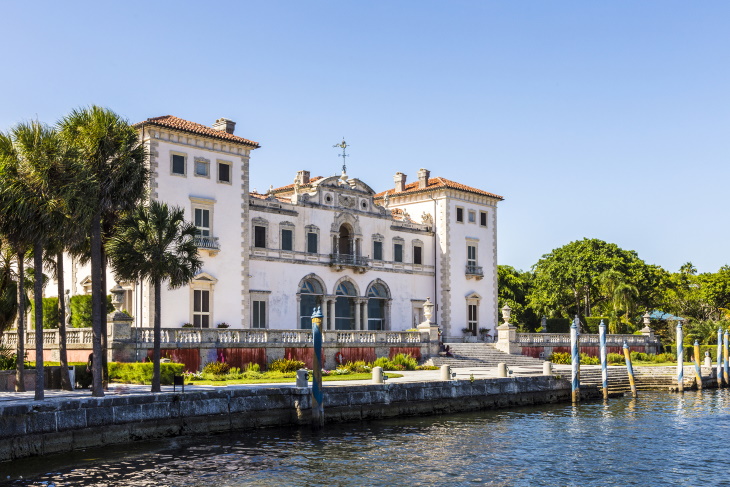
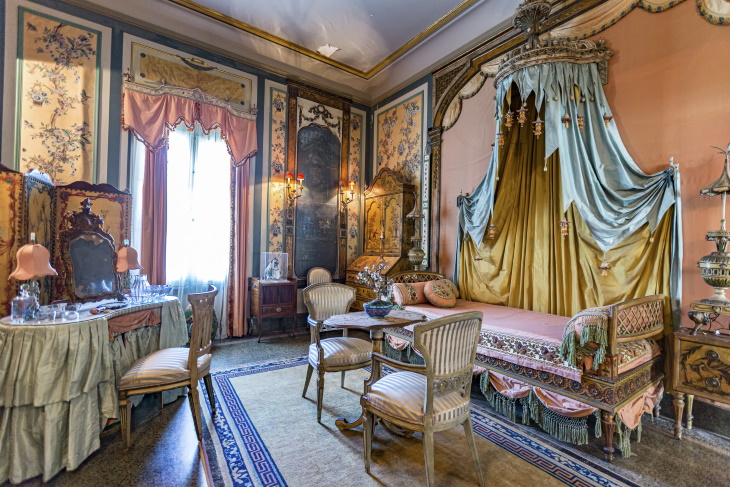
Villa Vizcaya was imagined by architect F. Burrall Hoffman as a modern version of an 18th-century Italian villa. The Mediterranean elements of the building design, such as a flat terracotta roof and breezy interior spaces perfectly complement Florida’s subtropical climate. James Deering was also a collector of antiquities, and the villa reflects his passion. “The interiors of the Main House were meant to suggest the passing of time and the layered accumulation of artifacts and memories. The rooms were designed around objects acquired in Italy,” the museum’s website explains.
The estate also includes stunning Italian Renaissance gardens designed by Diego Suarez. The Vizcaya Museum and Gardens are open to the public.
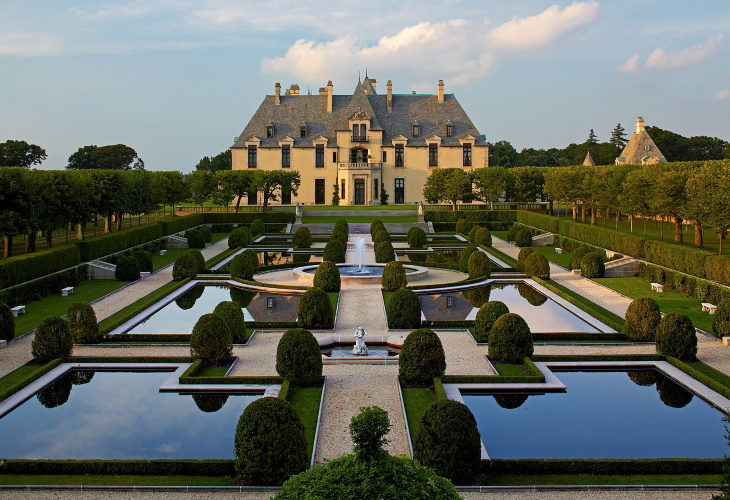

The estate was built by the Olmsted Brothers on a manmade hill. In front of the building, there is a beautiful sunken garden in the French style, with neatly manicured hedges and water terraces. The area also features a golf course, pool, sports court, stables, and a massive greenhouse complex. Following a massive restoration in the late 1980s, the abandoned mansion was turned into a hotel.
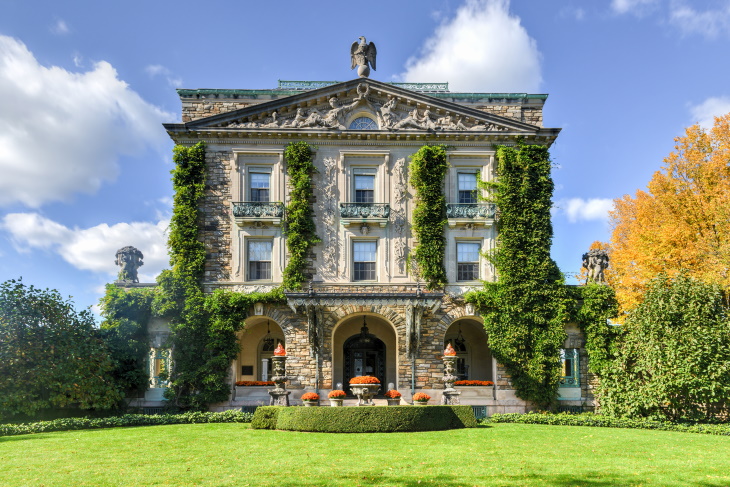
Pronounced as KY-ket, the name of this historic home comes from the Dutch word for “lookout” - kijkuit. The 40-room mansion is located in Mount Pleasant, just 25 miles to the north of New York City. The building is located on the highest peak of Pocantico Hills overlooking the Hudson Valley.
The original owner of Kykuit, John D. Rockefeller, needs no introduction, and neither does his family, which included famous governors and vice presidents. The family home was owned by the Rockefellers for four generations before being handed over to the National Trust for Historic Preservation. Today, the estate is a must-see destination on any Hudson Valley tour.


Now the Mark Twain House and Museum, this American Gothic-style home in Hartford, Connecticut, is just as brilliant as its famous owner. Mark Twain’s biographer Justin Kaplan curiously described it as "part steamboat, part medieval fortress and part cuckoo clock."
The estate was developed by Edward Tuckerman Potter, and it has a typical asymmetrical layout, steep Victorian roof, and ornately decorated bay windows. This structure was finalized in 1881 based on a previously existing building. Legend has it that the appearance of the home is supposed to resemble a riverboat. The interior of the home was overlooked by none other than Louis Comfort Tiffany.
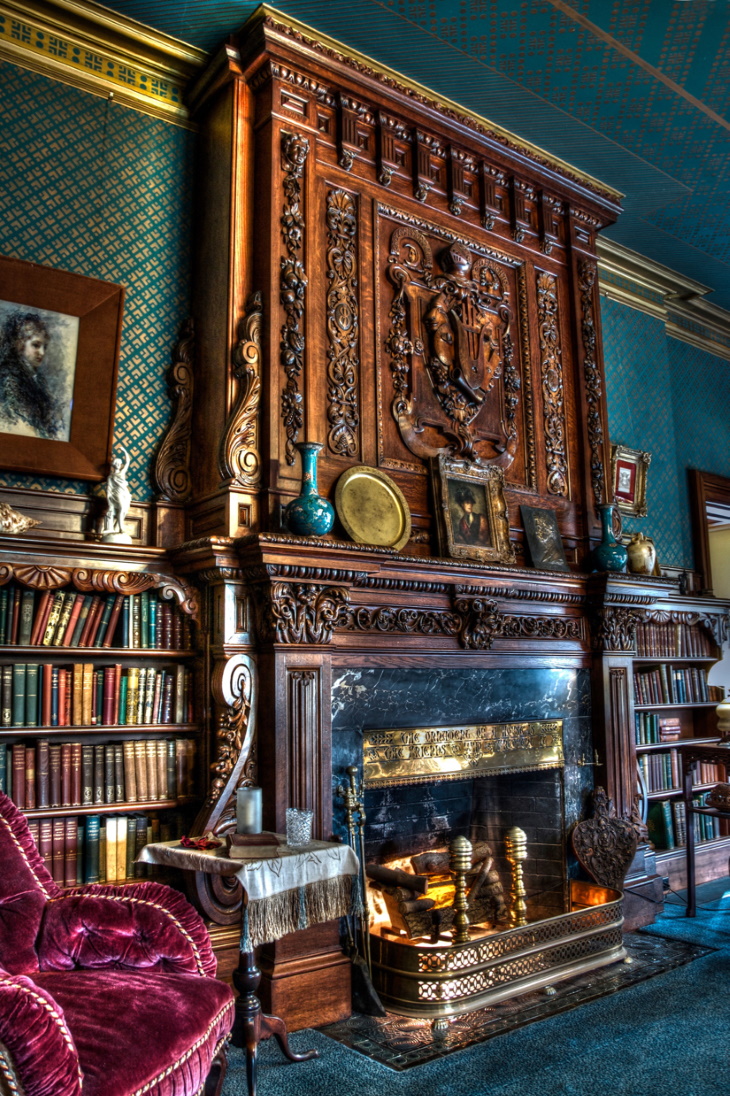

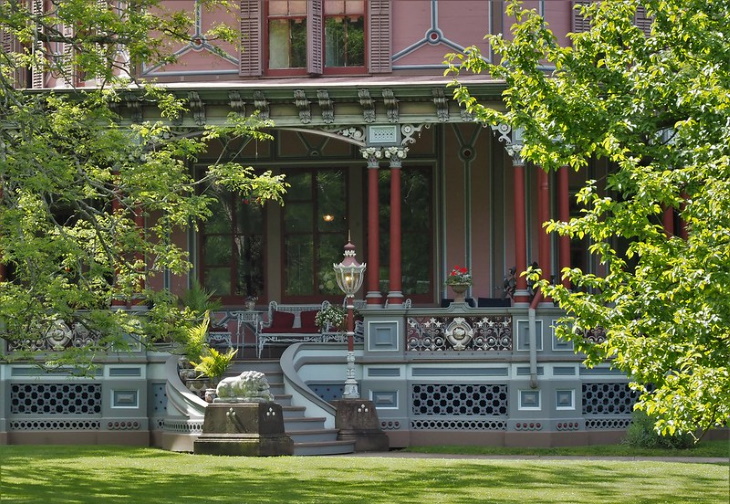
The Octagon House was constructed in 1859-1860 for financier Paul J. Armour. Even though the architect of this daring project remains unknown, the idea for an octagonal home came to Armour from a book by Orson Squire Fowler, who believed that such homes were sunnier, more spacious, and had rooms that were more easily accessible. The dome was added later when the home belonged to the tea importer Joseph Stiner.
The structure of the Armour-Stiner House is inspired by Donato Bramante’s Tempietto (1502) in Rome, a building belonging to the Italian Renaissance that is itself based on ancient Greek temples called Tholos. Today, the house remains a private residence.
References: Thoughtco, House Beautiful